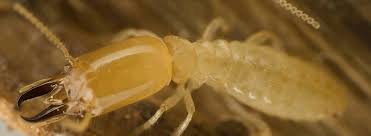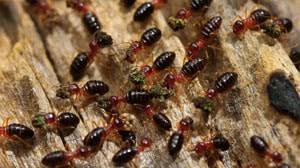Termite Control Kits for Beginners
These termites travel at least 50 metres from the colony via a series of underground tunnels to find food. Coptotermes acinaciformis send large numbers to new food sources and, thus, respond strongly to lure. In contrast, Coptotermes frenchi research for new food sources and feed lightly at points.
Nasutitermes exitiosus is common north of the Great Dividing Range. They construct dark, thin-walled mound nests between 30 cm and 75 cm above ground. These mounds are up to 1m in diameter.

Porotermes tend to reside in smaller colonies than other species, and do not construct shelter tubes or travel much underground. They're more readily controlled than other species.

Termite Control Kits - An Overview
A mature colony of Schedorhinotermes will have two distinct sizes of soldiers, also called major and minor soldiers. Major soldiers grow up to 5.6 mm long, while minor soldiers are only 3.6 mm long. Both kinds of soldier have mandibles.
Schedorhinotermes are harmful and relatively nomadic, rather than maintaining a fixed, central nest.
Heterotermes are widely dispersed throughout Australia. But they are only a significant insect species in the Northern Territory.
Examine This Report on Termite Control Liquid
The soldiers of the species are up to 4.75 mm long, with lengthy, dark jaws and parallel-sided heads.
Heterotermes reside in tiny colonies that assault fence posts, timber flooring, and paling fences within a radius of the nest. They are commonly found because they feed on small timbers on the soil surface.
Dusts work to control termites since they ingest and disperse the insecticide among the colony during habitual grooming.
Insect growth-regulator dusts (like Triflumuron) and non-repellent termiticides are the most powerful methods of termite pest control for the human consumer.
Everything about Termite Control Kits
Arsenic trioxide dust has been Related Site used since the 1930s to control termites, often with the addition of oxide or another colourant. However, arsenic trioxide is a poisonous, highly poisonous elemental pesticide that does not degrade.
Baiting is often the ideal way to kill an attacking colony when the main nest website cannot be found. Bait stations also allow you to collect samples of termites for species identification.
Bait stations consist of containers of cellulose materials like timber, paper or cellulose gel that are either buried in the ground near the building under assault or carefully placed inside near known harm.
The Ultimate Guide To Termite Control License
Bait generally utilize slow-acting, non-detectable toxins that the nearly whole colony can be poisoned before effects appear. Repellent termiticide formulations such as those of all pyrethroids are not as colony control agents. Care must be taken not to cross contaminate baits with even tiny residues of different pesticides.
Baiting go to this web-site does not provide a barrier. The baits do not isolate the building since termites are able to get the construction. For long-term structural protection, barriers are preferred.
Chemical barriers function by applying an unbrokenBoundary of pesticide around the outside of an infested structure. This creates a zone or band of poisonous soil that the termites cannot cross. Creating an effective chemical barrier may involve trenching around the foundations of this structure, and injecting the chemical into the soil through holes drilled in concrete foundations. .
Termites work through the treated soil unaware that they are picking up a toxic compound. This reduces the population and may ruin the colony.
More About Termite Control License
Repellent chemicals, for example Bifenthrin, are commonly used as barriers. Non-repellent termiticides, such as Imidacloprid and Fipronil, may be resilient where protection is uncertain (for instance, where the compound is injected through concrete).
Soil may also be treated with a chemical barrier prior to building construction. Bifenthrin is commonly used for this function; Imidacloprid is often employed for the perimeter of a new arrangement.
This technique isolates the termite colony out of a building by creating a barrier around or beneath a buildings foundations that termites cannot cross.
Crushed granite of a particular form and size. Termites cannot get into a building if read what he said granite particles are too big and heavy for them to maneuver. Granite aggregate is commonly implemented around pipes and behind the lower bricks of a building parameter that has a concrete slab foundation.
Little Known Facts About Termite Control License.
Marine-grade stainless steel mesh can be glued to concrete slab foundations, masonry and around pipes via slabs. Termites cannot enter through the little mesh openings.
Strip shielding, such as metal ant caps on the tops of stumps under suspended wood floors, can also help prevent termite attack. If installed properly, termites have to construct an easily observable sand tube within the cap to penetrate the building.